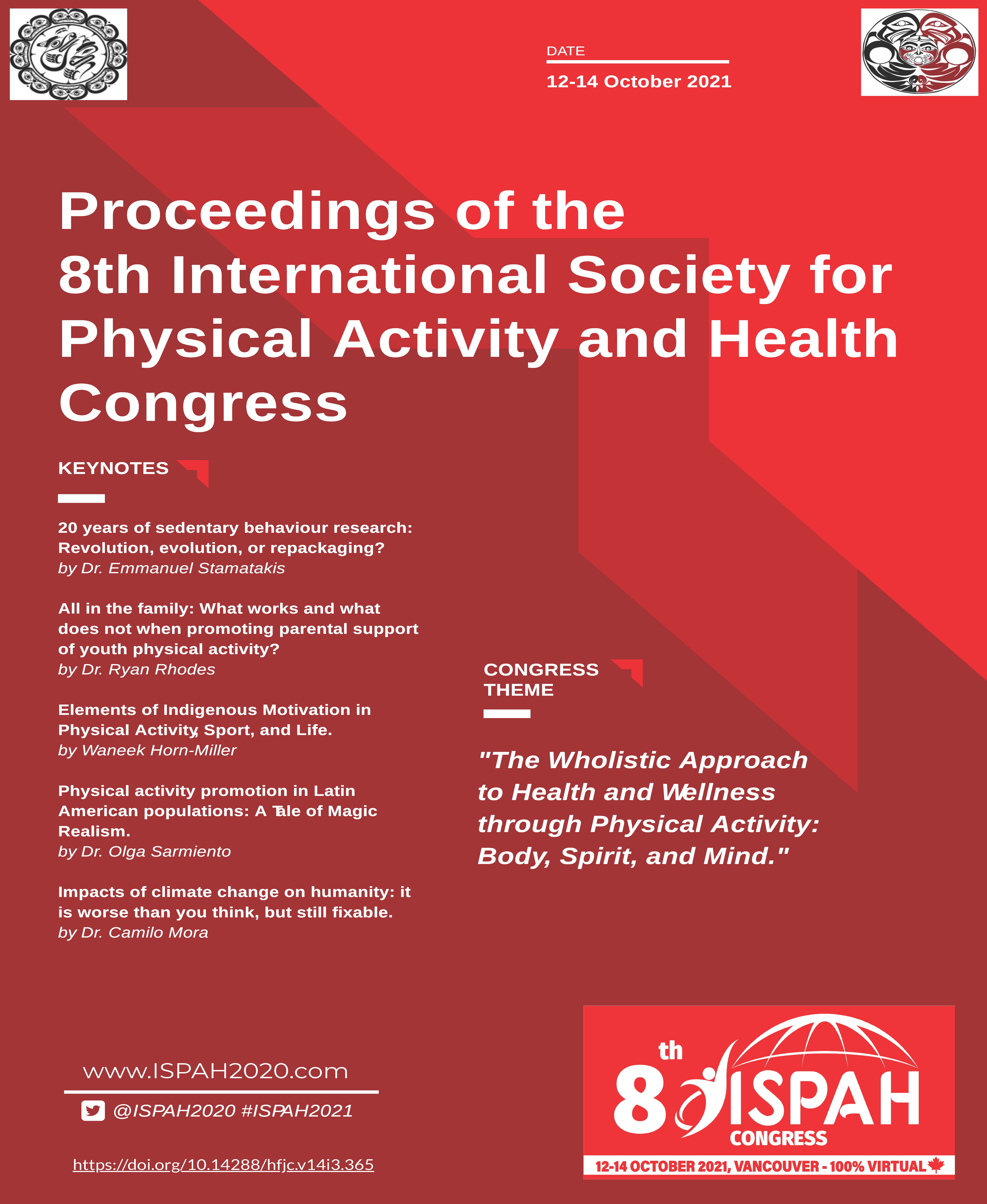Switching from active to passive travel—What is the potential among adolescents?
Oral Presentation A1.1
DOI:
https://doi.org/10.14288/hfjc.v14i3.376Keywords:
Active Travel, Motorised Transport, Modal Shift, Travel PatternsAbstract
Background: Few Australian adolescents are sufficiently active. Replacing short ‘passive’ travel (i.e. car, public transport) with active travel (i.e. walking or cycling) could be an important potential strategy to increase physical activity. Purpose: To characterise adolescents’ travel patterns to various destinations, identify short passive trips that could be feasibly replaced by active travel, and identify the characteristics associated with those trips. Methods: Data were from 2,192 Victorian secondary school students (12-17 years; 51% males) with 24-h travel diary data in the Victorian Integrated Survey of Travel Activity 2012–2016. Feasible distance thresholds for walking and cycling were determined at the 80th percentile of distance of reported walking and cycling trips, respectively, in the sample. Comparison tests were conducted to assess whether travel patterns differed by sociodemographic characteristics. Multilevel logistic regression identified characteristics of passive trips that could be replaced by active travel. Results: A total of 6,428 trips comprising 8,986 trip legs (segments) were recorded. About 11% of adolescents could feasibly replace ≥1 short passive trip with walking and 48% could feasibly replace ≥1 short passive trip with cycling. Of the passive trips recorded, 7% could be replaced with walking and 40% could be replaced with cycling. Trips that commenced within daylight hours, and trips made for shopping and social reasons had higher odds of being replaceable by active travel. Conclusion: Increasing cycling for transport, especially for discretionary trips made during daylight hours, could potentially have a significant impact on overall physical activity levels. Funding: VL is supported by an Executive Dean’s Postdoctoral Research Fellowship. JV is supported by an Australian National Heart Foundation Future Leader Fellowship (ID 101928). AMCA was previously supported by, and AT was a recipient of, a National Health and Medical Research Council Centre for Research Excellence (APP1057608) during the conduct of this study.
Published
How to Cite
Issue
Section
License
Copyright (c) 2021 Venurs Loh, Shannon Sahlqvist, Jenny Veitch, Alison Carver, Ana María Contardo Ayala, Rachel Cole, Anna Timperio

This work is licensed under a Creative Commons Attribution-NonCommercial-NoDerivatives 4.0 International License.
Terms of Publication
Authors who publish with this journal agree to the following terms:
- Authors retain copyright and grant the Health & Fitness Journal of Canada’s right of first publication with the work simultaneously licensed under a Creative Commons Attribution License that allows others to share the work with an acknowledgement of the work's authorship and initial publication in this journal.
- Authors are able to enter into separate, additional contractual arrangements for the non-exclusive distribution of the journal's published version of the work (e.g., post it to an institutional repository or publish it in a book), with an acknowledgement of its initial publication in this journal.
- Authors are permitted and encouraged to post their work online (e.g., in institutional repositories or on their website) prior to and during the submission process, as it can lead to productive exchanges, as well as earlier and greater citation of published work (See The Effect of Open Access).
- The Contributor (author(s)) represents and guarantees that the Contributor is the sole proprietor of the work and the Contributor has full power to make this Agreement and grant that the work does not infringe the copyright or other proprietary right of any other person; and the work contains no libellous or other unlawful matter and makes no improper invasion of the privacy of any other person. The Contributor also represents and is responsible for the accuracy of the work.
- The Contributor will read, correct, and return promptly galleys and page proofs to the Editor (or designate). The Contributor will be responsible for the completeness and accuracy of these corrections. If the Contributor does not return galleys and page proofs within the schedule agreed upon with the Editor (or designate), the Publisher may proceed without the Contributor corrections.
- When applicable, the Contributor agrees to obtain written permissions and letters of agreement for all matter contained in the work that is protected by existing copyright, paying any permission fees for the use of text or illustrations controlled by others, and furnishing the Publisher with written evidence of the copyright owner’s authorization to use the material.
- When applicable, the Contributor agrees to obtain written permission for inclusion of any photographic materials involving a human subject, and provide the Publisher with written evidence of the subject’s authorization to use this material. In the case of subjects who have not reached the age of majority, the Contributor agrees to obtain and furnish the Publisher with written permission from the parent and/or legal guardian.
- The Contributor may draw on and refer to material in the work in preparing other articles for publication in scholarly and professional journals and papers for delivery at professional meetings, provided that credit is given to the work and to the Publisher.
- This agreement may not be changed unless the Contributor and the Publisher agree to the change by means of a formal addendum signed by the Contributor and the Publisher’s representative.
- This agreement shall be construed and governed according to the laws of the province of British Columbia and shall be binding upon the parties hereto, their heirs, successors, assigns, and personal representatives. Should any formal proceedings related to this agreement be brought, such formal proceeding may be brought only in the province of British Columbia.
By submitting an article to the Health & Fitness Journal of Canada the Contributor has accepted and agreed to all terms outlined in the copyright notice.

